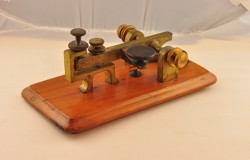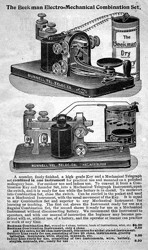Mechanical Practice Sets
Mechanical Practice Sets, as the name implies, are simple "telegraph" instruments designed to produce a clicking sound without the use of electricity. Instead of current flowing through a sounder coil, the key lever is pressed and it strikes against another piece of metal, often in the same shape as a sounder anvil. They were used by people learning to send and receive Morse Code.
Some of these mechanical sets are just a simple lever key, while others have fake sounder coils designed to look like the real thing. The most elaborate ones will have a key and "sounder" mounted separately on a board similar to a KOB, but with a metal rod connecting the two units.
Below are several examples of mechanical practice sets from around the world:
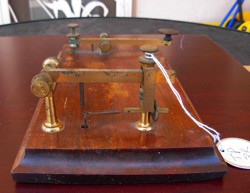 |
 |
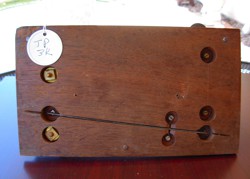 |
A very early mechanical set made by WD Putt & Co, Wellsville Ohio. Patented in 1870. This set has a separate key and sounder on a board like a KOB. A metal rod under the base connects the two units so that when the key lever is depressed, it pulls down on the sounder lever to make the clicking sound.
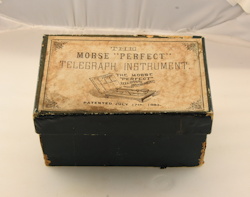 |
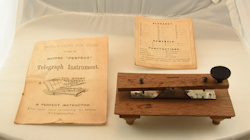 |
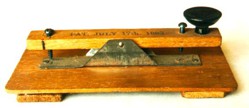 |
The Morse Perfect Mechanical Telegraph Instrument. Patented in 1883.
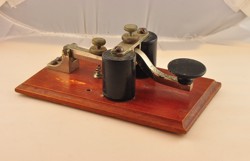 |
A mechanical set by ES Greeley, NY. This particular set has fake sounder coils to give it a look of being a real sounder, but they are just for show. |
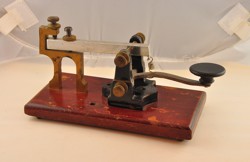 |
Another set similar to the Bunnell made by Voltamp Co. |
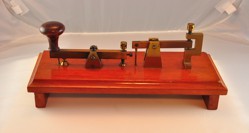 |
A British mechanical set made by Walters Electrical, Model 40S. It operates on the same principle as the Putt set above. |
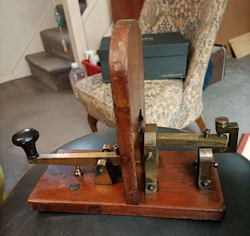 |
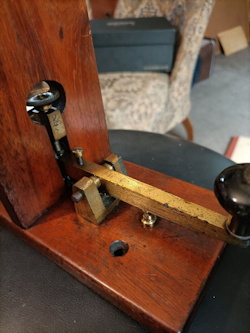 |
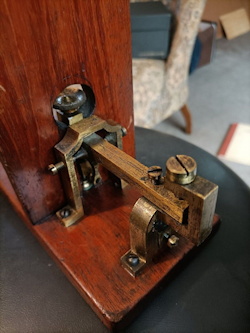 |
A homemade mechanical practice set made from a British GPO key and sounder.
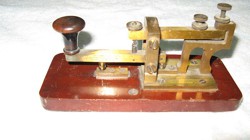 |
Another British made mechanical set, maker unknown. |
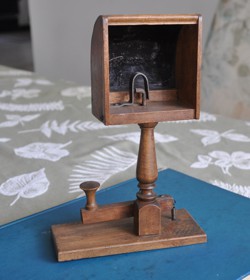 |
A French mechanical set, marked Alban-Lafon (Evreux). This mechanical set uses a simple sounder inside a resonator hood to help amplify the sound. |
 |
An interesting mechanical set called The Telegrapher, made by Allison & Guinan Mfg Co, Cleveland Ohio. Includes a paper chart showing the American Morse Code. |
 |
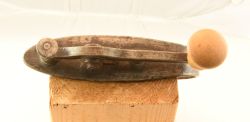 |
Another very simple practice key that screws onto the edge of a table. Maker unknown. |

